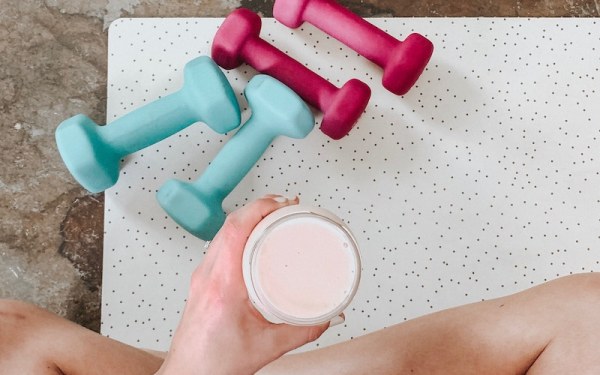
Osteoporosis prevention: A lifestyle approach
For an older adult, a fracture is a life-changing event, and all too often leads to a permanent functional decline. The International Osteoporosis Foundation states that around one in three women will have an osteoporotic fracture and around one in four men. Osteoporosis is also one of the most promising conditions for prevention through Lifestyle Medicine, particularly exercise.
Osteoporosis is a loss of bone integrity and strength. There are two ways to diagnose it: the first is by measuring bone mineral density, and the second is when a fragility fracture occurs, usually from a fall from standing height, or spontaneous fracture. In Australia, when someone meets these criteria, they can start subsidised treatment for osteoporosis.
The problem with these diagnostic criteria is that most fragility fractures actually occur in people who have low bone density, but not low enough to be diagnosed with osteoporosis. This is why understanding bone metabolism and prevention is so important1. Osteoporosis is frequently associated with sarcopenia; a loss of muscle strength and function that affects around 35% of women over 65. This can be a debilitating condition as it is associated with an increased risk of falls2.
Bone is a living, dynamic tissue and healthy bone is constantly turning over, with cells called osteoclasts breaking down bone and another cell type, osteoblasts, laying down new bone. The resorption and reformation of bone is important for repair of microfractures and to allow modification of structure in response to stress and other biomechanical forces, which is why muscle strengthening impact bone strengthening.
Cassandra Smith is an exercise physiologist and PhD candidate at the Institute of Sport, Exercise and Active Living at Victoria University. Her research focuses on bone and muscle. To optimise bone strength, Cassandra recommends weight bearing exercise, like walking, running and dancing, and particularly resistance training.
In an Australian study, a group of postmenopausal women were recruited and half were assigned to low intensity exercise, while the other half were assigned to supervised thirty minute high intensity, progressive resistance and impact weight-bearing training over eight months, with a control group assigned to low intensity at home unsupervised exercise. The group assigned to weight training had an increase in bone density, while the low intensity group actually declined over the eight months of the study3. Other groups have shown that resistance training has long-term benefits for fracture reduction. In a German group, sixteen years after an intervention, the strength training group had half as many fractures as the controls4.
The other component of fracture prevention is the prevention of falls. Strength and balance training with a physiotherapist can help, and Tai Chi is also an evidence based falls prevention strategy5. Many hospitals also run interdisciplinary falls and balance clinics.
One of the biggest challenges for many clinicians is actually prescribing the appropriate exercise. In a UK dataset, while many medical students knew exercise was beneficial, they around half did not feel they had adequate training to prescribe it6. Prevention of osteoporosis with exercise truly requires an interdisciplinary approach. For many people, particularly over forty, it can be challenging to find an appropriate community program, and many will benefit from seeing an exercise physiologist to have appropriate technique and progression.
This is particularly important for women, as women are at higher risk for osteoporosis and more likely to be inactive. Since Osteoporosis risk is also related to peak bone mass, which occurs before age forty, encouraging women to undertake resistance training is likely to have a huge forward impact. Not only is this likely to decrease fracture risk, but it is also likely to enable women to maintain muscle strength and the independence this brings to enjoy a long life.
Dr Kate Gregorevic is a geriatrician and researcher at the Royal Melbourne Hospital with an interest in healthy ageing. She is also a health writer and speaker and her work has been in The Age/Sydney Morning Herald, News.com and Mamamia. Her first book on Longevity and wellbeing will be released in 2020.
Dr Kate Gregorevic and Cassandra Smith are the founders of Project Three Six Twelve; an online exercise and wellbeing course for women in their forties and beyond, combining resistance training, Tai Chi with nutrition and education.
Table 1: Risk Factors for Osteoporosis
- Smoking
- Inflammatory arthritis
- Kidney disease
- Early menopause
- Diabetes
- Inflammatory bowel disease
- Hyperthyroidism
- Coeliac disease
- Female sex
- Yu EW. Screening for osteoporosis. UpToDate. 2018.
- Mayhew AJ, Amog K, Phillips S, et al. The prevalence of sarcopenia in community-dwelling older adults, an exploration of differences between studies and within definitions: a systematic review and meta-analyses. Age and ageing. 2019;48(1):48-56.
- Watson SL, Weeks BK, Weis LJ, Harding AT, Horan SA, Beck BR. High-Intensity Resistance and Impact Training Improves Bone Mineral Density and Physical Function in Postmenopausal Women With Osteopenia and Osteoporosis: The LIFTMOR Randomized Controlled Trial. J Bone Miner Res. 2018;33(2):211-220.
- Kemmler W, Bebenek M, Kohl M, von Stengel S. Exercise and fractures in postmenopausal women. Final results of the controlled Erlangen Fitness and Osteoporosis Prevention Study (EFOPS). Osteoporosis international : a journal established as result of cooperation between the European Foundation for Osteoporosis and the National Osteoporosis Foundation of the USA. 2015;26(10):2491-2499.
- Li F, Harmer P, Fitzgerald K, et al. Effectiveness of a Therapeutic Tai Ji Quan Intervention vs a Multimodal Exercise Intervention to Prevent Falls Among Older Adults at High Risk of Falling: A Randomized Clinical TrialTai Ji Quan vs a Multimodal Exercise Intervention for Preventing Falls in High-Risk Older AdultsTai Ji Quan vs a Multimodal Exercise Intervention for Preventing Falls in High-Risk Older Adults. JAMA Internal Medicine. 2018;178(10):1301-1310.
- Green A, Engstrom C, Friis P. Exercise: an essential evidence-based medicine. The Medical journal of Australia. 2018;208(6):242-243.



